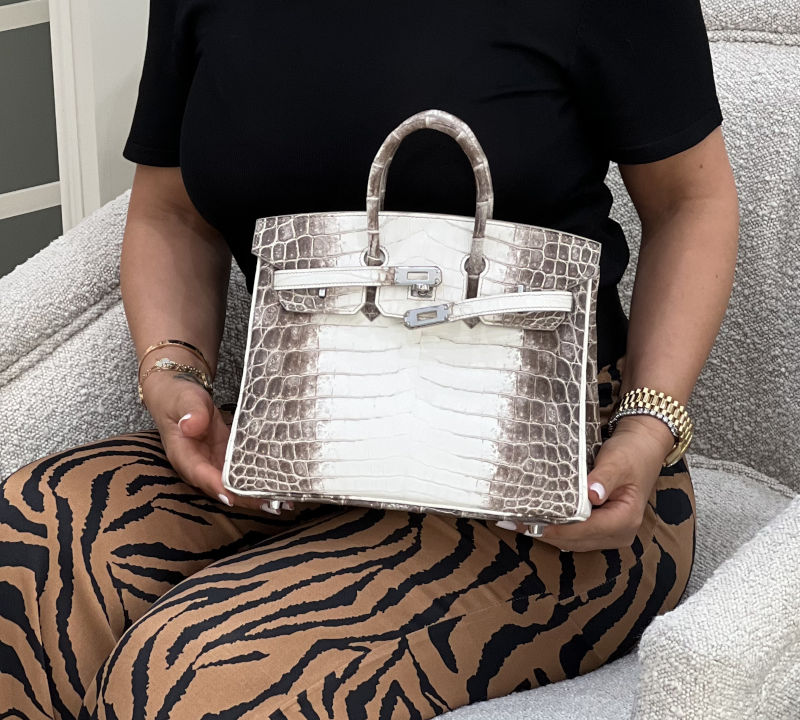Made in Where? What Luxury Brands Don’t Want on Your Feed
By Kelli Luu | 16 Apr, 2025
Trump tariffs have blown open the heavy veils of secrecy that had been protecting the fashion industry’s workings.
Anyone who’s made a designer purchase has wondered—how much did this really cost to make?
And of course we *thinking* fashion groupies also wonder who stitched it or if we’re really just paying for the logo and fancy shopping bag.
Thanks to TikTok the secrets are no longer staying behind factory doors.
After those crazy Trump tariffs ballooned to 145%, Chinese manufacturers have been hopping on the platform to unveil what goes on in the designer fashion world before consumers spot those coveted goods in shop windows and display cases.
This is one way the Chinese suppliers are trying to keep from being buried by those crazy tariffs. And going viral is helping them winback business.
Earlier this week DHgate, a Chinese e-commerce platform known for selling plausible dupes of designer goods, rose to number 2 on the App Store in the United States. Seems to me many Americans are already on the hunt for a cheaper version of their $98 Lululemon leggings.
These TikToks are indeed spilling those high-end secrets, with footage of $5 leggings supposedly being made in the same factory lines as high end brands. Another factory worker casually walked viewers through the making of what looked like an Hermès Birkin Bag selling for just $1,400, a fraction of the $34,000 you would pay for the real thing.
Are all these claims really true?
Brands like Louis Vuitton insist their products aren’t made in China but that many are assembled in places like Italy or France. This distinction gives them the legal right to slap a “Made in France” label right on that iconic Dior satchel bag.
That’s right. We don’t really know for certain where the materials are sourced or whether they’re partially crafted in other countries — like China maybe. All we know is that the finishing touches — especially logo placement — get done in Europe.
All these behind-the-scenes clips are giving consumers the notion that it might be smart to consider buying pieces for hundreds or even thousands of dollars less, if the only thing they’re missing is the status logo.
For some, purchasing dupes is an act of empowerment, refusing to pay for the name of a brand, but for others, it's a double-edged sword. Are near identical designs without a label considered counterfeit or is it just smart shopping?
These TikToks are indeed spilling those high-end secrets, with footage of $5 leggings supposedly being made in the same factory lines as high end brands.

Asian American Success Stories
- The 130 Most Inspiring Asian Americans of All Time
- 12 Most Brilliant Asian Americans
- Greatest Asian American War Heroes
- Asian American Digital Pioneers
- New Asian American Imagemakers
- Asian American Innovators
- The 20 Most Inspiring Asian Sports Stars
- 5 Most Daring Asian Americans
- Surprising Superstars
- TV’s Hottest Asians
- 100 Greatest Asian American Entrepreneurs
- Asian American Wonder Women
- Greatest Asian American Rags-to-Riches Stories
- Notable Asian American Professionals

